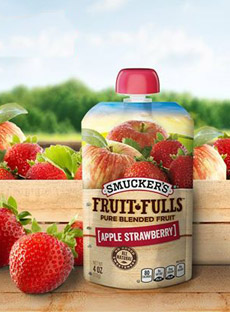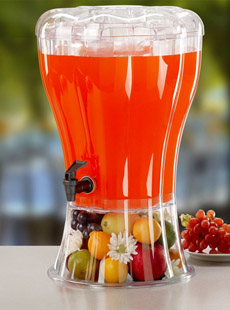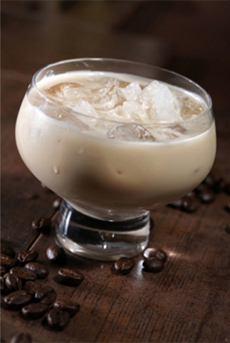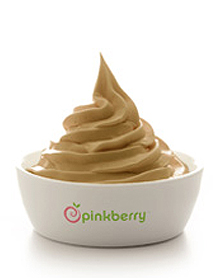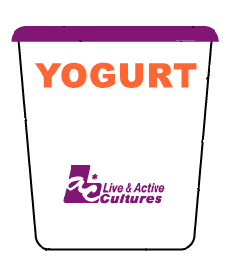|

New Petite Crème, a creamy yogurt
alternative without the tang of yogurt. Photo
courtesy Stonyfield.
|
|
The category of Greek yogurt has exploded in the U.S. Is there anyone who isn’t eating it? The Greek category accounts for 47% of all U.S. yogurt sales.
Yes! A large enough number of people don’t care for the tang, such that Stonyfield, a subsidiary of French dairy giant Danone (of Dannon yogurt fame) that specializes in organic yogurt, has introduced a product to capture their business:
Called Petite Crème (PEH-tee CREHM), it’s a French dairy product called fromage frais (fresh cheese), known in Germany and elsewhere as quark.
Fromage frais is high-moisture-content, unaged cheese: drained, coagulated milk (simple lactic set curd) intended to be eaten within days of its production. It is most popularly eaten for breakfast or with fruit for dessert. In the U.S., it is waiting to step right in where the yogurt-averse fear to tread.
Fromage frais has a creamy, soft texture and fresh, sweet flavor, although the fromage frais cheeses of the U.S. are less flavorful than those made in other countries from unpasteurized milk (U.S. law requires all cheeses aged fewer than 60 days to be made of pasteurized milk to eliminate potentially harmful bacteria; pasteurization kills off friendly, tasty bacteria in the process).
|
|
Petite Crème has the consistency of yogurt without the tang and debuts in seven flavors:
Belle Blueberry
La Vie en Strawberry
Mon Cherry Amour
Ooh La La Peach
Plain & Simple
Strawberry-Banana Ménage
Vive la Vanilla!
The Stonyfield line is certified kosher by OU.
|
|
The all-organic ingredients include cultured pasteurized nonfat milk, sugar, cream, cornstarch, vanilla or other flavors and guar gum. What’s missing? Live and active cultures, like Lactobacillus bulgaricus and Streptococcus thermophilus.
In yogurt, the cultures ferment the milk, causing the thickening. With Petite Creme, cornstarch and guar gum (a bean-based powder) the job.
The nutritional content is similar to Greek yogurt: 10g protein per 5.3 ounce cup.
For the plain variety, calories per 5.3 ounce serving are 100, 30 from fat, with 5g sugar that is the lactose in the milk.
A fruit flavor, such as Strawberry, has 30 calories, 25 from fat, and 15 g sugar.
We recently had the opportunity to taste all the flavors and have two personal favorites: Mon Cherry Amour, with intense black cherry flavor, and Plain & Simple, the original fromage frais.
|
|

Be sure to try the plain version as well as the fruit flavors. Photo courtesy Stonyfield.
|
ABOUT CHEESE RECIPES
Fromage frais, quark, yogurt: What’s the difference? Cheese and yogurt* are made from a common ingredient—milk. But depending on how that milk is handled, thousands of different recipes result.
Cheese is produced from milk due to the activity of special dairy bacteria and the action of rennet. These act on the proteins in milk, causing them to coalesce into a gel-like curd which is the beginning of cheese.
Milk type and butterfat level
Amount and type of cultures (bacteria)
Amount of rennet
Added moisture (water)
Time and temperature at which the milk is heated
Brining time and additives (beer or wine, for example)
Size of the cut curds
Length of time stirred
How the whey is removed
How the rind is treated
Ripening time
Minor changes in any of these areas can have a dramatic affect on the final product.
*Yogurt is not a fresh cheese. The definition of cheese requires rennet. Even though yogurt has a texture very similar to fromage frais and quark, there is no rennet in yogurt. Rennet coagulates the milk, causing it to separate into solids (curds) and liquid (whey). Curds and whey exist separately even in fresh cheeses like fromais frais, where they are not visible to the naked eye.
|
|
